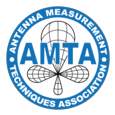- Home
-
About AMTA
- Bylaws
- AMTA Board of Directors - 2024
- Committees
-
Awards & Recognition
- Joe Pape Honorary Life Membership Award
- Distinguished Achievement Award
- Distinguished Service Award
- Distinguished Speaker Award
- Best Paper Awards
- Best Student Paper Awards
- Eric Walton Student Travel Award
- Fellow Membership Recognition
- Fellow Emeritus Membership Recognition
- Senior Membership Recognition
- AMTA Regional Nodes
- Our History
- Partner Organizations
- Join AMTA
- Events
- Publications
- Members Only
- Login Help
- Search
